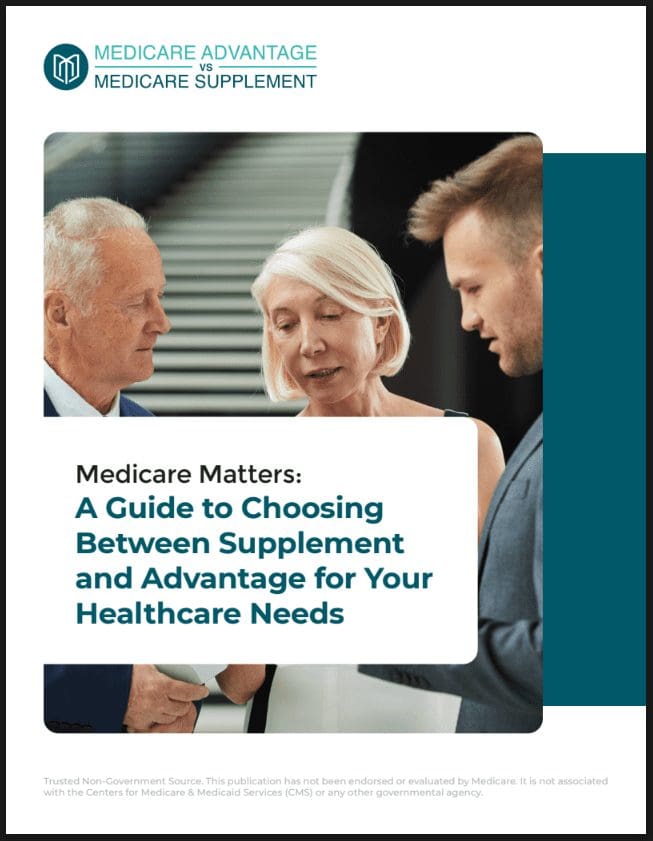Key Takeaways
-
Medicare does not cover 100% of healthcare costs. Many retirees face thousands in out-of-pocket expenses, especially for services with limited or no Medicare coverage.
-
Understanding deductibles, coinsurance, out-of-pocket maximums, and excluded services is essential to avoid financial surprises in retirement.
The Illusion of Full Coverage
You might have assumed that Medicare would handle the bulk of your medical expenses in retirement. After all, it’s a federal program specifically designed for people aged 65 and older. But in 2025, Medicare is still far from being all-inclusive. If you’re like most retirees, you’re learning that firsthand. From unexpected hospital bills to uncovered treatments and rising drug costs, the reality is sobering.
What Medicare Covers in 2025
Medicare is divided into parts, each with specific functions:
-
Part A (Hospital Insurance): Covers inpatient care, skilled nursing facility care, hospice, and limited home health services.
-
Part B (Medical Insurance): Covers outpatient care, doctor visits, preventive services, and some home health care.
-
Part D (Prescription Drug Coverage): Helps cover the cost of prescription medications.
-
Medicare Advantage (Part C): Offered by private plans but must include Parts A and B coverage, sometimes bundling in Part D and extra services.
Despite all these parts, there are still major gaps in coverage that catch retirees off guard.
The Realities of Out-of-Pocket Costs
Even if you’re enrolled in Medicare Parts A, B, and D, you’re still on the hook for a significant share of your healthcare costs. Here’s what often adds up:
-
Deductibles: In 2025, you pay $1,676 for each hospital benefit period under Part A and $257 annually for Part B before coverage kicks in.
-
Coinsurance and Copayments: You’re responsible for 20% of most Part B services after the deductible. That includes outpatient surgery, durable medical equipment, and lab tests.
-
Prescription Costs: Part D coverage has a $590 deductible, and although the new $2,000 annual out-of-pocket cap helps, many retirees still reach it quickly.
Common Sources of Unexpected Expenses
These are some of the biggest contributors to surprise medical bills in retirement:
1. Long-Term Care
Medicare doesn’t cover long-term custodial care. If you need help with bathing, dressing, or eating, those expenses are your responsibility. A single year in a nursing facility can cost tens of thousands of dollars, and most retirees are not financially prepared for this.
2. Dental, Vision, and Hearing
Original Medicare excludes routine dental care, eye exams, eyeglasses, and hearing aids. If you experience a dental emergency or lose hearing in retirement, you’re likely paying out of pocket unless you’ve enrolled in a separate supplemental plan.
3. Mental Health Services
While Part B covers outpatient mental health services, the cost-sharing can still be significant. In 2025, services from licensed therapists such as LMFTs and MHCs are covered, but sessions often require coinsurance payments, and access is limited in some regions.
4. Ambulance and Emergency Services
You may assume emergency care is fully covered, but it often isn’t. If the ambulance provider is out-of-network or if Medicare doesn’t deem the trip medically necessary, you’re left footing the bill.
5. Foreign Travel
Medicare typically doesn’t cover healthcare you receive outside the United States. If you travel abroad, medical emergencies may not be covered at all.
Understanding the $2,000 Drug Cost Cap in 2025
Starting in 2025, there’s a cap on out-of-pocket drug costs under Part D: $2,000 per year. This is a major improvement, eliminating the old coverage gap (or “donut hole”). However, that doesn’t mean you’re safe from high costs:
-
Specialty medications can hit the cap quickly.
-
The cap resets annually.
-
Not all drugs are covered, especially if they’re off-formulary or require prior authorization.
Medicare Advantage Trade-Offs
You may have joined a Medicare Advantage plan to simplify your coverage. While these plans often include vision, dental, and hearing, they come with their own risks:
-
Out-of-pocket maximums can reach $9,350 for in-network care in 2025.
-
Network restrictions may limit which doctors or hospitals you can use.
-
Prior authorizations can delay or deny care you thought would be covered.
Why Medigap Doesn’t Always Eliminate Costs
Medigap (Medicare Supplement Insurance) is designed to help fill gaps in Original Medicare. But even with a Medigap plan:
-
Premiums can be high and increase with age.
-
It doesn’t cover prescription drugs, long-term care, or dental services.
-
You must already be enrolled in Original Medicare (not Advantage).
Medical Inflation and Its Impact
Healthcare inflation continues to outpace general inflation. In 2025, even modest medical needs can quickly lead to financial strain. Procedures, medications, and diagnostic tests have all seen price hikes, and this affects what you pay under coinsurance or in services not covered at all.
The Financial Domino Effect in Retirement
Unexpected Medicare-related bills don’t just affect your healthcare budget. They can impact every part of your retirement plan:
-
Emergency savings may be depleted.
-
Monthly income from Social Security may not stretch far enough.
-
Withdrawals from retirement accounts may need to increase, triggering more taxes.
-
Spousal care needs may be delayed or limited due to one partner’s medical expenses.
Preventive Strategies for 2025 and Beyond
To avoid being blindsided, you need a forward-looking Medicare strategy:
-
Review all plan documents annually during the October 15 to December 7 enrollment period.
-
Consider Medicare Part B and D carefully before delaying enrollment, as late penalties are permanent.
-
Estimate annual costs using calculators that factor in deductibles, copayments, and your health history.
-
Work with a licensed agent to compare options tailored to your needs.
Why Many Retirees Are Still Caught Off Guard
Despite widespread awareness of Medicare’s structure, many retirees still experience shock when the bills arrive. That’s partly due to the complexity of the system, but also because costs can escalate quickly depending on your health status, prescriptions, and even ZIP code.
You may have budgeted for premiums, but not for high coinsurance, denied claims, or out-of-network charges. And once you reach retirement, there’s less flexibility to increase income to offset these costs.
2025 Medicare Trends to Keep in Mind
Several policy shifts and market realities are influencing Medicare this year:
-
Medicare is expanding coverage for behavioral health, including telehealth, but access remains limited in some areas.
-
New high-cost therapies are entering the market faster than formularies adjust.
-
Supplemental benefits in Advantage plans continue to shift. Fewer plans offer transportation and OTC benefits compared to 2024.
-
Higher-income enrollees face rising IRMAA surcharges for Parts B and D.
What You Can Do Now
Take control of your healthcare expenses in retirement by:
-
Auditing your current Medicare coverage. Understand what’s covered and what’s not.
-
Setting aside an annual medical emergency budget. Even $2,000 to $5,000 per year can reduce financial stress.
-
Evaluating supplemental coverage. Consider both Medigap and stand-alone dental or vision plans.
-
Monitoring your prescriptions. Ask your doctor about alternatives that cost less or are covered under your plan.
-
Exploring preventive care. Most screenings and annual wellness visits are covered under Part B, so take advantage of them to avoid future complications.
Your Healthcare Security Needs More Than Medicare Alone
Relying on Medicare alone is no longer enough in 2025. While it forms the foundation of your healthcare in retirement, the growing complexity and out-of-pocket responsibilities require active planning.
Whether it’s deciding between Medigap and Medicare Advantage, managing drug costs, or preparing for uncovered services like long-term care, your strategy should evolve with your health and financial situation. That means staying informed, reviewing your options annually, and getting help from someone who knows the system inside and out.
If you need help understanding how to reduce out-of-pocket costs or want to evaluate which Medicare options best fit your situation, get in touch with a licensed agent listed on this website.









